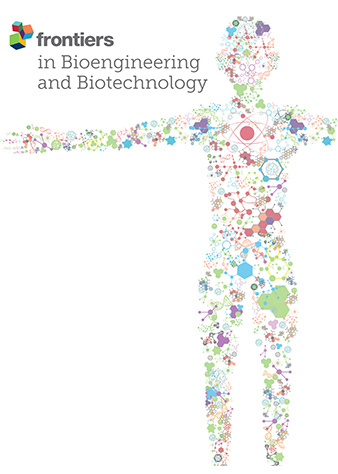用于治疗心肌缺血再灌注损伤的活性氧 (ROS) 响应型生物材料
IF 4.3
3区 工程技术
Q1 BIOTECHNOLOGY & APPLIED MICROBIOLOGY
引用次数: 0
摘要
心肌缺血再灌注损伤(MIRI)是心脏缺血后恢复血流时出现的一个关键问题。在此过程中产生的过多活性氧(ROS)会加剧细胞损伤并损害心脏功能。近期的治疗策略侧重于利用 ROS 的微环境来设计靶向给药系统。ROS 响应型生物材料已成为前景广阔的候选材料,可提高疗效并减少全身不良反应。本综述探讨了心肌缺血再灌注过程中 ROS 过度产生的机制,并总结了用于心肌缺血再灌注治疗的 ROS 响应型生物材料的重大进展。我们讨论了赋予这些材料 ROS 敏感性的各种化学策略,强调了 ROS 诱导的溶解度转换和降解机制。此外,我们还重点介绍了各种 ROS 响应治疗平台,如纳米颗粒和水凝胶,以及它们在为 MIRI 给药方面的独特优势。我们回顾了证明这些材料在动物模型中缓解 MIRI 的功效的临床前研究,以及它们的作用机制和潜在的临床意义。我们还探讨了将这些基于生物材料的先进疗法应用于临床实践以改善 MIRI 管理和心脏预后所面临的挑战和未来前景。本综述将为研究 MIRI 干预的新型治疗策略的研究人员和临床医生提供有价值的见解。本文章由计算机程序翻译,如有差异,请以英文原文为准。
Reactive oxygen species (ROS)-responsive biomaterials for treating myocardial ischemia-reperfusion injury
Myocardial ischemia-reperfusion injury (MIRI) is a critical issue that arises when restoring blood flow after an ischemic event in the heart. Excessive reactive oxygen species (ROS) production during this process exacerbates cellular damage and impairs cardiac function. Recent therapeutic strategies have focused on leveraging the ROS microenvironment to design targeted drug delivery systems. ROS-responsive biomaterials have emerged as promising candidates, offering enhanced therapeutic efficacy with reduced systemic adverse effects. This review examines the mechanisms of ROS overproduction during myocardial ischemia-reperfusion and summarizes significant advancements in ROS-responsive biomaterials for MIRI treatment. We discuss various chemical strategies to impart ROS sensitivity to these materials, emphasizing ROS-induced solubility switches and degradation mechanisms. Additionally, we highlight various ROS-responsive therapeutic platforms, such as nanoparticles and hydrogels, and their unique advantages in drug delivery for MIRI. Preclinical studies demonstrating the efficacy of these materials in mitigating MIRI in animal models are reviewed, alongside their mechanisms of action and potential clinical implications. We also address the challenges and future prospects of translating these state of the art biomaterial-based therapeutics into clinical practice to improve MIRI management and cardiac outcomes. This review will provide valuable insights for researchers and clinicians working on novel therapeutic strategies for MIRI intervention.
求助全文
通过发布文献求助,成功后即可免费获取论文全文。
去求助
来源期刊

Frontiers in Bioengineering and Biotechnology
Chemical Engineering-Bioengineering
CiteScore
8.30
自引率
5.30%
发文量
2270
审稿时长
12 weeks
期刊介绍:
The translation of new discoveries in medicine to clinical routine has never been easy. During the second half of the last century, thanks to the progress in chemistry, biochemistry and pharmacology, we have seen the development and the application of a large number of drugs and devices aimed at the treatment of symptoms, blocking unwanted pathways and, in the case of infectious diseases, fighting the micro-organisms responsible. However, we are facing, today, a dramatic change in the therapeutic approach to pathologies and diseases. Indeed, the challenge of the present and the next decade is to fully restore the physiological status of the diseased organism and to completely regenerate tissue and organs when they are so seriously affected that treatments cannot be limited to the repression of symptoms or to the repair of damage. This is being made possible thanks to the major developments made in basic cell and molecular biology, including stem cell science, growth factor delivery, gene isolation and transfection, the advances in bioengineering and nanotechnology, including development of new biomaterials, biofabrication technologies and use of bioreactors, and the big improvements in diagnostic tools and imaging of cells, tissues and organs.
In today`s world, an enhancement of communication between multidisciplinary experts, together with the promotion of joint projects and close collaborations among scientists, engineers, industry people, regulatory agencies and physicians are absolute requirements for the success of any attempt to develop and clinically apply a new biological therapy or an innovative device involving the collective use of biomaterials, cells and/or bioactive molecules. “Frontiers in Bioengineering and Biotechnology” aspires to be a forum for all people involved in the process by bridging the gap too often existing between a discovery in the basic sciences and its clinical application.
 求助内容:
求助内容: 应助结果提醒方式:
应助结果提醒方式:


